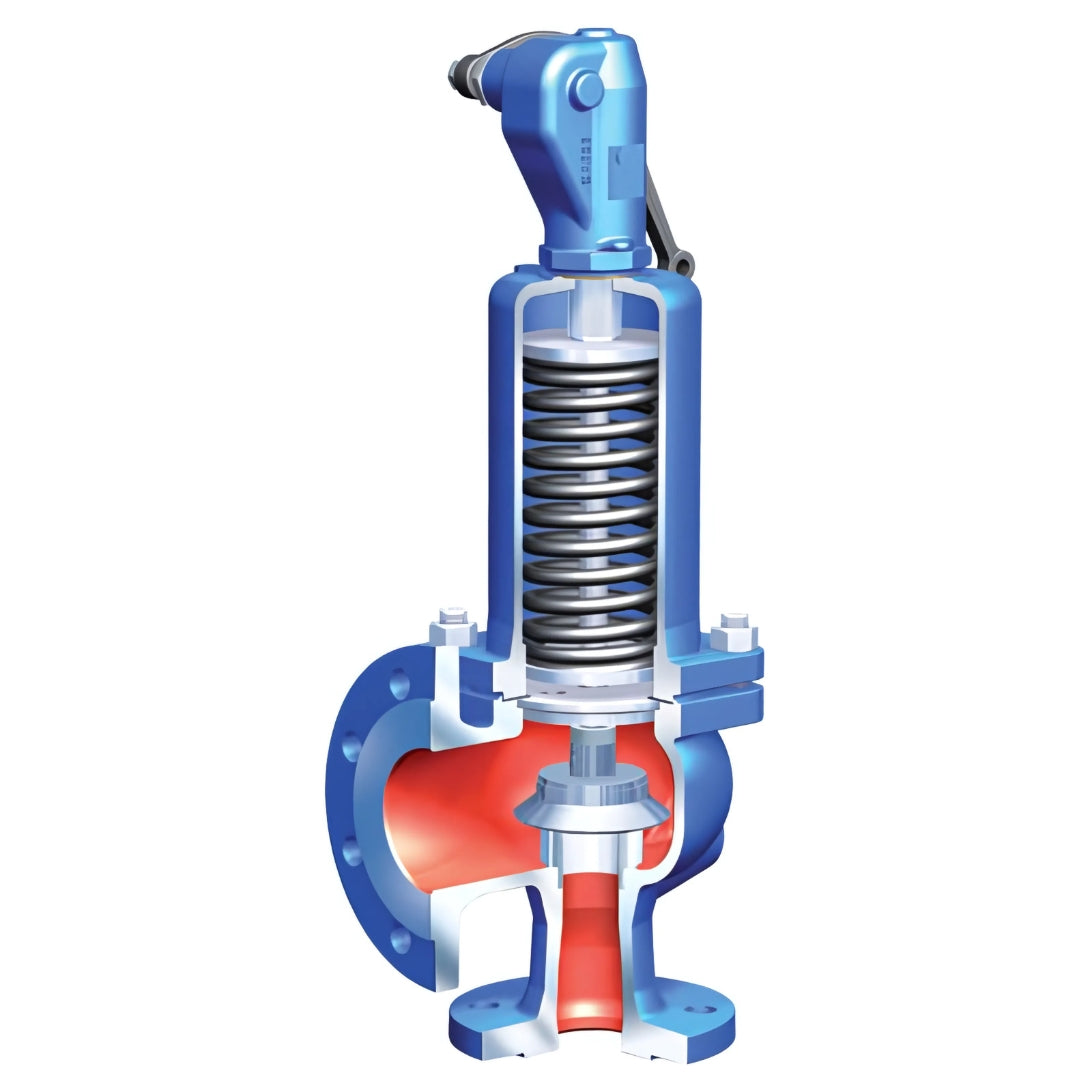Steam Valves
ARI Armaturen SAFE Safety Valve (Angle Pattern, Flanged PN40, Cast Steel Body)
ARI Armaturen SAFE Safety Valve (Angle Pattern, Flanged PN40, Cast Steel Body)
Couldn't load pickup availability
The ARI SAFE Safety Valve with angle pattern design, PN40 flanged connections, and a cast steel body is a robust and dependable pressure relief solution engineered for demanding industrial applications. Designed to automatically vent excess pressure from steam, gas, or fluid systems, this safety valve ensures system integrity and operational safety under high-pressure conditions.
Constructed from high-quality cast steel, the body offers superior strength, impact resistance, and excellent thermal stability — making it ideal for use in power generation, petrochemical plants, heating systems, and process industries. The PN40 flange rating enables secure integration into high-pressure pipelines, while the angle pattern layout promotes efficient discharge and simplifies installation in tight spaces or vertical lines.
Manufactured by ARI Armaturen, a trusted name in valve technology, this safety valve combines precision engineering with reliable performance — offering a long service life, excellent sealing capabilities, and full compliance with international safety standards.
Key Features
Cast Steel Body
Rugged construction suitable for high-temperature and high-pressure steam or gas service.
Angle Pattern Design
Space-efficient layout for vertical discharge and easy integration into compact systems.
PN40 Flanged Ends
Engineered for use in pressure systems up to 40 bar, ensuring leak-tight and safe operation.
Accurate Pressure Relief
Protects equipment and piping by releasing excess pressure at pre-set limits.
Durable and Low Maintenance
Built for longevity with minimal maintenance, even in continuous-duty applications.
Proven in Industrial Environments
Widely used in boilers, pressure vessels, heat exchangers, and process control lines.
Share

FAQ's
What is the difference between a valve and an actuator?
What types of actuators are available?
The main types of actuators are:
Pneumatic actuators – use compressed air for fast, reliable operation.
Electric actuators – use electrical power for precise control.
Hydraulic actuators – use fluid pressure for high-torque applications.
Each type offers unique advantages depending on the environment, media, and system control needs.
How do I choose the right actuator for my valve?
To select the correct actuator, consider:
Valve type and torque requirement
Power source available (air, electric, or hydraulic)
Operating environment (temperature, humidity, hazardous area)
Control signal type (on/off or modulating)
Matching actuator torque and compatibility with the valve’s ISO mounting ensures reliable performance.
What are the main types of valves used in automation?
The most common valves in automated systems include:
Ball valves – for tight shutoff and quick operation.
Butterfly valves – for larger flow control with compact design.
Globe valves – for precise throttling and flow regulation.
Check valves – to prevent backflow.
Gate valves – for full bore flow isolation.
What’s the difference between a double-acting and spring-return actuator?
Double-acting actuators use air (or power) to both open and close the valve.
Spring-return actuators use air to open (or close) the valve, and a built-in spring to automatically return it to a safe position when power or air is lost — ideal for fail-safe operation.
How often should valves and actuators be serviced?
Regular maintenance intervals depend on operating conditions, but a good rule of thumb is to inspect every 6–12 months.
This includes checking for leaks, lubrication, seal wear, and actuator responsiveness to prevent unexpected downtime.

